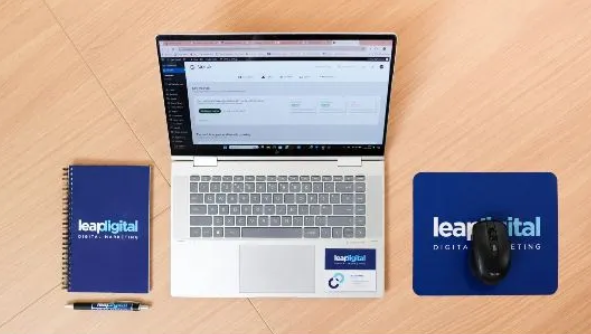Smartphones have become an essential part of everyday life, and their displays are arguably one of the most crucial components of the device. Whether it’s for browsing the web, watching videos, or simply checking notifications, the display plays a pivotal role in the overall user experience. However, like any other component of a smartphone, the display is not immune to problems. A damaged screen, poor display performance, or flickering visuals can be frustrating and hinder your phone’s usability. Thankfully, advancements in technology have led to the development of Phone Diagnostic Software, a powerful tool for identifying and troubleshooting display issues on smartphones. In this article, we will explore the top software for diagnosing display problems on phones, how Phone Clinix uses such tools to help users, and the various types of display issues that can be addressed with these solutions.
Common Display Problems in Smartphones
Before delving into the Phone Diagnostic Software used to diagnose display issues, it’s essential to understand the various types of display problems that can occur. These issues can stem from both hardware and software-related causes. Here are some of the most common display problems faced by smartphone users:
- Unresponsive Touchscreen: The touchscreen may fail to respond to touch inputs, making it impossible to interact with the device.
- Screen Flickering: Users may experience flickering or flashing on the screen, which could be a sign of a software bug or a hardware malfunction.
- Color Distortion: When the display colors appear off, such as overly saturated or washed-out, it might indicate a hardware issue with the screen or graphics chip.
- Dead Pixels: Small black or white spots on the screen that do not respond to touch can be caused by dead pixels.
- Screen Cracks or Physical Damage: Physical damage to the screen can result in a cracked, shattered, or black screen that is unusable.
- Ghost Touches: This occurs when the phone registers touches on the screen that aren’t actually being made, often due to a malfunctioning touch panel.
- Screen Burn-In: Prolonged display of static images can cause burn-in, where faint, permanent images appear on the screen.
- Low Brightness or Dim Screen: The screen might not brighten enough, making it hard to read the display in well-lit environments.
How Phone Diagnostic Software Helps in Diagnosing Display Problems
Phone Diagnostic Software is a valuable tool for identifying and resolving display problems. It works by running a series of tests that analyze both the hardware and software components related to the display. Whether you’re experiencing issues with the touch functionality, color accuracy, or overall performance of the screen, Phone Diagnostic Software can provide insights into the problem.
Here’s how Phone Diagnostic Software can help diagnose display problems:
1. Testing Touchscreen Functionality
One of the first things Phone Diagnostic Software does when diagnosing display problems is testing the touchscreen functionality. By running tests that simulate touch input across the entire screen, the software checks for dead zones where the touchscreen might be unresponsive. If there are areas of the screen that fail to register touch inputs, it may indicate a hardware issue with the screen or its underlying digitizer.
2. Running Visual Diagnostics
For issues like screen flickering, color distortion, or dimming, Phone Diagnostic Software can run a visual diagnostic to test the display’s performance. The software will check the screen’s brightness, contrast, and color accuracy, allowing users to identify if the display is malfunctioning. If color distortion is detected, it may point to issues with the phone’s graphics chip, software configurations, or even the display hardware.
3. Dead Pixel Detection
Dead pixels are one of the most noticeable and annoying display issues. Phone Diagnostic Software can help detect dead pixels by running a test that fills the screen with different colors (white, black, red, green, and blue). This allows users to quickly identify any non-functional pixels. The software will indicate if there are any dead or stuck pixels, providing a clear diagnosis of the issue.
4. Identifying Screen Burn-In
Screen burn-in occurs when a static image remains on the display for an extended period, leading to a faint, permanent imprint on the screen. Phone Diagnostic Software can test for burn-in by running tests with solid colors or patterns that help detect lingering imprints from previous images. If burn-in is detected, the software will notify the user and recommend potential solutions.
5. Detecting Ghost Touches
Ghost touches, or phantom touches, occur when the screen registers touch input even though the user isn’t physically touching the screen. This can make it difficult to interact with the phone. Phone Diagnostic Software can simulate user interaction with the touchscreen to detect and pinpoint areas where ghost touches may be occurring. If the software identifies such issues, it can suggest steps to resolve the problem.
6. Hardware and Software Diagnosis
In some cases, display issues can arise from software bugs or conflicts, rather than hardware malfunctions. Phone Diagnostic Software can diagnose software-related problems by checking for updates or examining the phone’s operating system for any bugs that could be affecting the display. The software can also test the display drivers to ensure they are up to date and functioning correctly.
7. Brightness and Backlight Testing
A dim or low-brightness display can be caused by either hardware malfunction or improper software settings. Phone Diagnostic Software can test the display’s backlight and brightness sensors to ensure they are functioning properly. If the software detects any issues with the brightness controls, it can recommend steps to adjust settings or suggest hardware repairs if needed.
Top Phone Diagnostic Software for Display Problems
There are numerous Phone Diagnostic Software solutions available in the market, each with its features tailored to different phone models and types of display problems. Some of the top software tools for diagnosing display issues include:
1. Display Tester
Display Tester is one of the best tools for diagnosing common display problems like dead pixels, burn-in, and color issues. It allows users to test their screen with various solid colors and patterns to identify any flaws in the display. It also has a feature for detecting touch issues by running a touch-screen test.
2. Phone Doctor Plus
Phone Doctor Plus is a comprehensive diagnostic tool that can help users diagnose various hardware and software issues, including display-related problems. The app has a touch screen test, dead pixel test, and display color test. It is a great tool for anyone looking to diagnose common display problems.
3. TestM
TestM is another top-notch diagnostic tool that offers a complete analysis of your phone’s performance, including the display. With TestM, users can test the screen for dead pixels, touch responsiveness, and screen brightness. It also allows users to check the functionality of various hardware components like the battery, camera, and audio system.
4. Phone Check & Test
Phone Check & Test is an excellent diagnostic tool for identifying display issues. It includes a set of tests specifically for the display, including color tests, brightness tests, and touch responsiveness checks. It also helps detect issues with the screen’s backlight and color accuracy.
How Phone Clinix Uses Phone Diagnostic Software for Display Repairs
While Phone Diagnostic Software is helpful for identifying display problems, sometimes users need professional help to fix the issues. This is where services like Phone Clinix come in. Phone Clinix is a trusted service provider that uses advanced diagnostic tools, including Phone Diagnostic Software, to assess and repair smartphones. Their team of experts can help with:
- Hardware Repairs: If the software identifies that the display issue is due to hardware failure, Phone Clinix can help with physical repairs, such as replacing a cracked screen or fixing a malfunctioning digitizer.
- Software Fixes: If the issue is software-related, Phone Clinix can offer troubleshooting services such as updating drivers, reinstalling the operating system, or resetting software settings to restore display functionality.
- In-Depth Diagnostics: Phone Clinix uses comprehensive diagnostic tools to perform thorough checks on both hardware and software, providing users with an accurate diagnosis of the display problem.
- Expert Advice: If users are unsure whether the issue is software or hardware-related, Phone Clinix offers expert advice to guide them in the right direction.
Conclusion
Smartphone displays are among the most crucial components of a device, and display issues can be incredibly frustrating. Thankfully, with the help of Phone Diagnostic Software, users can quickly identify the root cause of display problems, whether they are related to the touchscreen, screen color, dead pixels, or other display-related issues. By using tools like Display Tester, Phone Doctor Plus, TestM, and Phone Check & Test, users can diagnose and fix many common display problems.
For more complex issues, Phone Clinix provides expert repair services, leveraging Phone Diagnostic Software to identify and resolve hardware and software problems. With the combination of diagnostic software and professional repair services, users can ensure their smartphone’s display remains in top condition, providing them with an optimal user experience.









